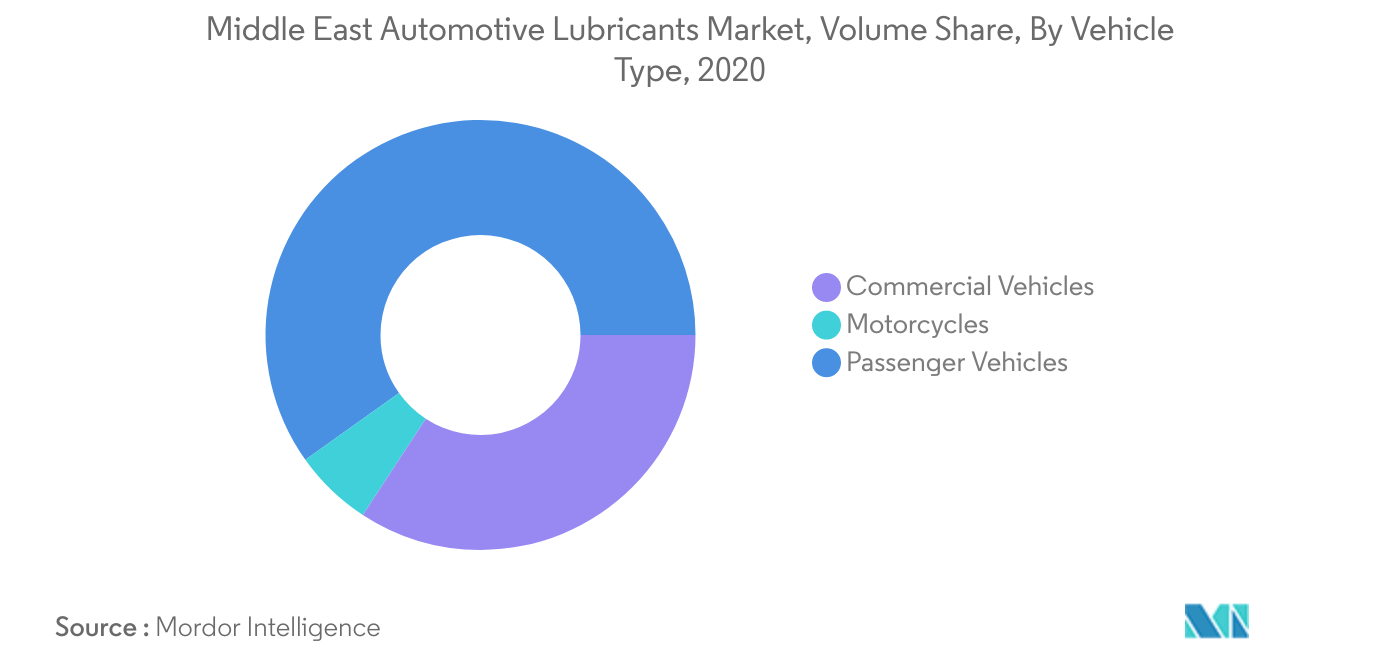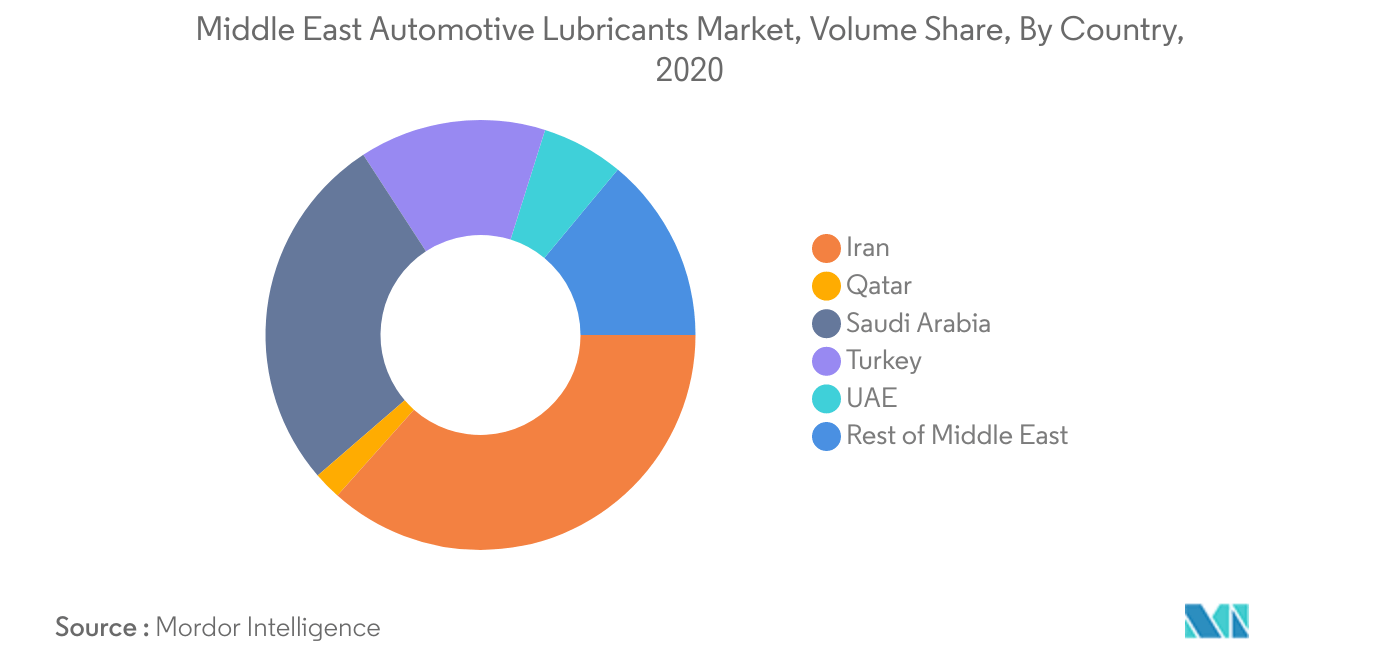Market Trends of Middle East Automotive Lubricants Industry
This section covers the major market trends shaping the Middle East Automotive Lubricants Market according to our research experts:
Largest Segment By Vehicle Type : <span style="font-family: 'regular_bold';color:#0e7db3;">Passenger Vehicles</span>
- In the Middle East region, passenger vehicles (PV) segment accounted for almost 67% share in the total number of on-road vehicles during 2020, followed by motorcycles and commercial vehicles with 18.49% and 14.45% shares, respectively.
- The passenger vehicles segment accounted for the highest share of 59.85% in the total automotive lubricant volume consumption in 2020, followed by the commercial vehicles segment with a share of 34.22%. During the same year, travel restrictions to curb COVID-19 significantly affected the usage of these vehicles and their lubricant consumption.
- During 2021-2026, motorcycles lubricants segment is expected to witness the highest CAGR growth at a CAGR of 3.63%. The recovery of passenger vehicle sales combined with the easing down of COVID-19 related travel restrictions are likely to be the key factors driving this trend.

Largest Country : <span style="font-family: 'regular_bold';color:#0e7db3;">Iran</span>
- In the Middle Eastern automotive lubricant market, consumption is the highest in Iran, followed by Saudi Arabia and Turkey. In 2020, Iran accounted for about 36.5% of the total automotive lubricant consumption in the region, whereas Saudi Arabia and Turkey accounted for shares of around 27.15% and 14.03%, respectively.
- In 2020, the COVID-19 pandemic significantly affected automotive lubricant consumption in many countries in the region. The UAE was the most affected with a 12.47% drop during 2019-2020, whereas Turkey was the least affected with a 6.38% drop in its automotive lubricant consumption.
- During 2021-2026, Turkey is likely to be the fastest-growing lubricant market as the consumption is likely to grow, recording a CAGR of 6.29%, followed by the UAE and Qatar, which are expected to record a CAGR of 3.01% and 2.89%, respectively.


